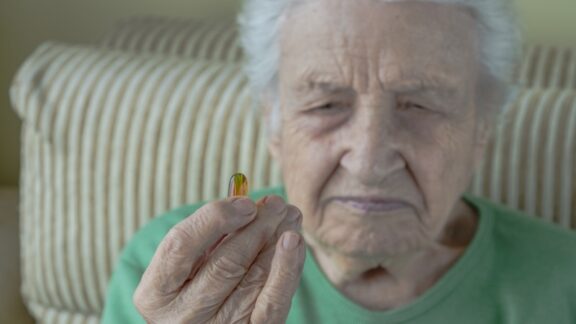Pickleball continues to grow in popularity, especially among older adults, but before you grab a racquet, inform yourself of pickleball risks and how to play safely.
Everyone knows someone who plays pickleball, that sport with the funny name that combines tennis, ping pong, and badminton. You may be one of them! In fact, in 2024, the Sports and Fitness Industry Association reported that pickleball was the fastest-growing sport in the U.S. among people of all ages.
But this game has gained particular popularity with seniors, with approximately one-third of those who play pickleball more than eight times a year over the age of 65. Older players have flocked to pickleball because the sport offers cardiovascular and muscle- and bone-building benefits like tennis, but its slower pace and smaller court makes it more accessible. Not to mention, the game is easy to learn and encourages socialization and a sense of community, which is important for people as they age. Even 55-year-old Andre Agassi, after ending his tennis career in 2006, has taken up the sport professionally!
Pickleball risks
But if you know people who play pickleball, you probably also know people who have been injured playing the game. A study co-authored by Dr. Eric Bowman, an assistant professor of orthopedic surgery at Vanderbilt University Medical Center, found that between 2017 and 2022, pickleball-related injuries rose faster than the popularity of the sport itself. And pickleball risks and injuries are especially prevalent in older players who haven’t been active in a while. Approximately 80% of all pickleball injuries occur in those 60 to 79, compared with tennis, where injuries are more common in younger players.
The National Institutes of Health reports that these injuries typically occur during a slip, trip, or fall, resulting about one-third of the time in a strain or sprain or, in roughly 10% of cases, in a fracture. Sprains are more common for men, and fractures happen more often to women.
Why are so many seniors getting hurt?
 Most of the injuries can be chalked up to seniors not warming up and stretching enough or playing too frequently or aggressively after being sedentary for years. Their bodies aren’t conditioned to handle the demands of the sport. Osteoporosis can also turn a minor fall into a fracture.
Most of the injuries can be chalked up to seniors not warming up and stretching enough or playing too frequently or aggressively after being sedentary for years. Their bodies aren’t conditioned to handle the demands of the sport. Osteoporosis can also turn a minor fall into a fracture.
“There’s a lot of quick stops and starts in pickleball, along with lunging and twisting movements,” said Dr. Diana S. Young, a board-certified orthopedic surgeon with Lee Physician Group Orthopedics of Fort Myers, Florida. “When you’re younger, these movements aren’t so much an issue. But in older adults, muscles aren’t as strong and flexible, and bones are more brittle, which can affect coordination, stability, and balance.”
How to prevent injury
Start slowly and gradually build the intensity of your play, recommends Ches Jones, an injury control researcher at the University of Arkansas. Running, swimming, and cycling in conjunction with pickleball can also help build your strength and endurance.
Before you begin playing, ask someone who knows the game to give you pointers on your form and technique.
Senior fitness expert Robert Linkul also advises stretching and warming up your whole body, but especially your lower back, hips, knees, ankles, and shoulders. And while you’re playing, listen to your body so you don’t overdo it. Don’t forget to use the proper equipment, wear supportive shoes, and hydrate well.
But before ever stepping on a pickleball court, consult your primary care doctor about pickleball risks and whether the sport is right for you. Your physician can identify any potential health concerns and advise you on how to proceed safely.
Pickleball can strengthen your muscles and bones, improve your endurance, reduce stress, and increase your overall sense of well-being both physically and emotionally – but not if you’re laid up on the sidelines. Take your time and the right precautions and you’ll not only have fun but reap all the benefits!
Related: The Benefits of Play for Adults





